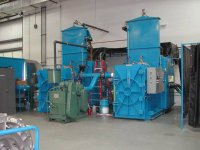CarefulGrower
Active member
Good example of why you should use a desiccator, or really strong stainless steel pressure vessel to vacuum purge bho, quite the reaction -
http://www.youtube.com/watch?v=7AH47oZKhpI
http://www.youtube.com/watch?v=7AH47oZKhpI

 ! I was hoping someone would comment on ebay dessicators.
! I was hoping someone would comment on ebay dessicators.


